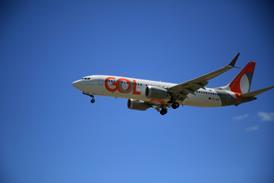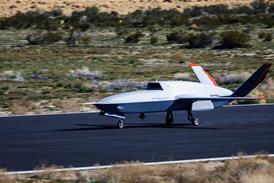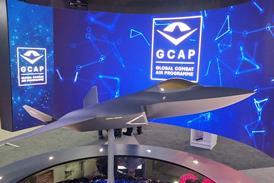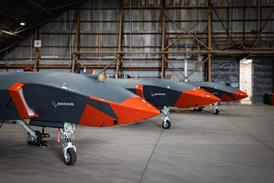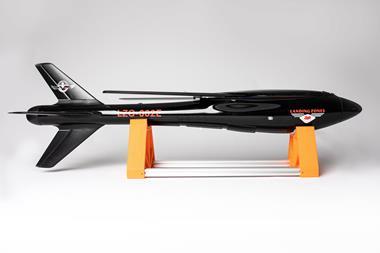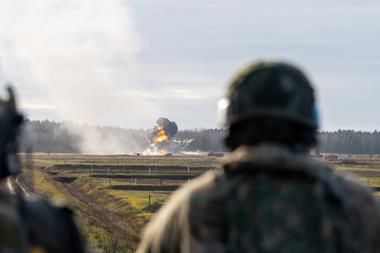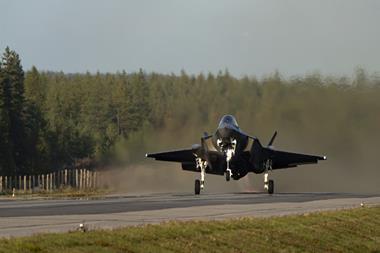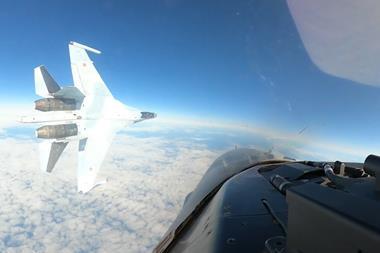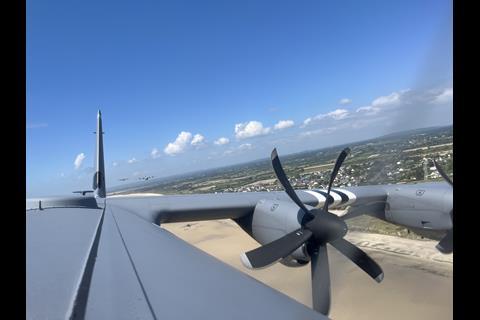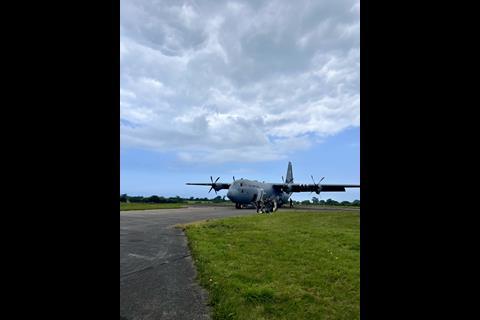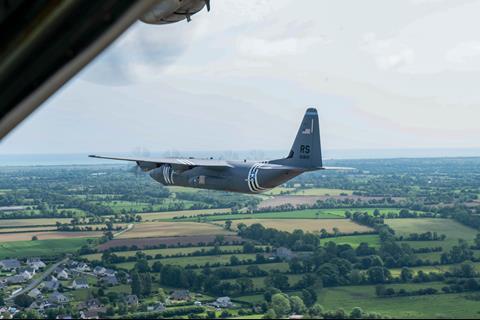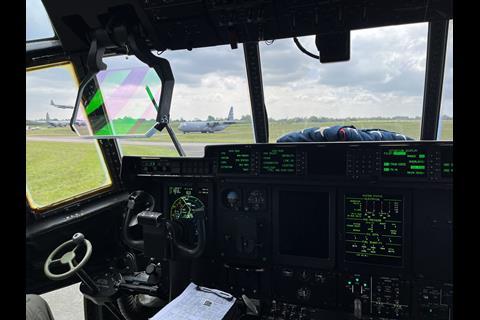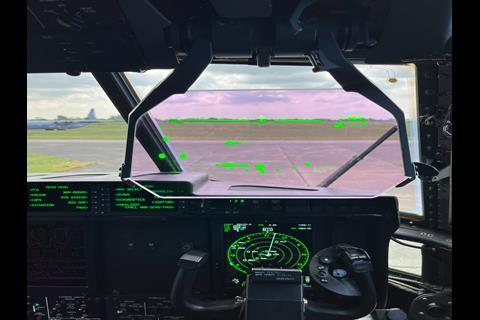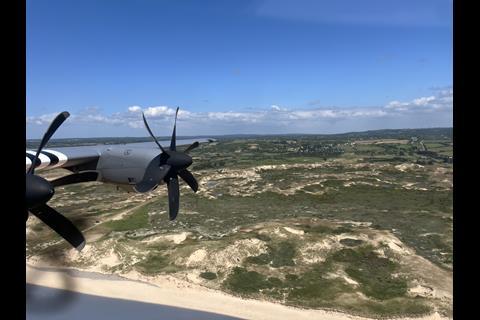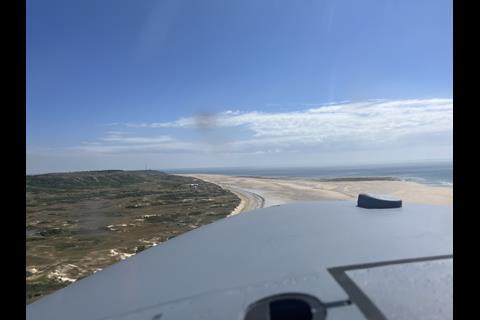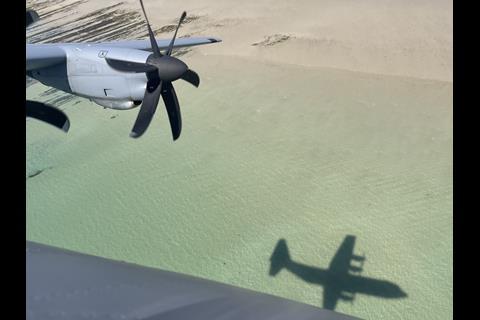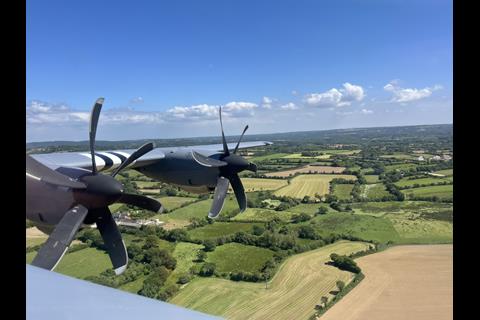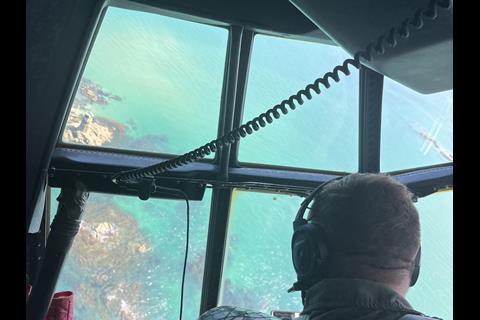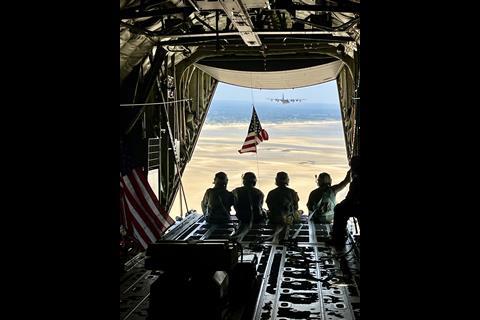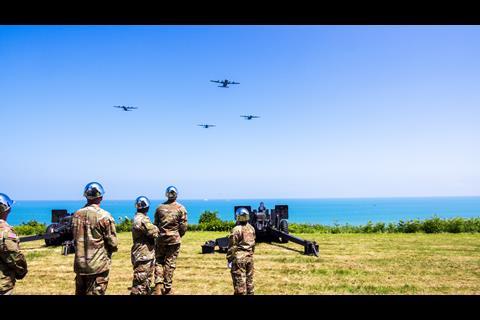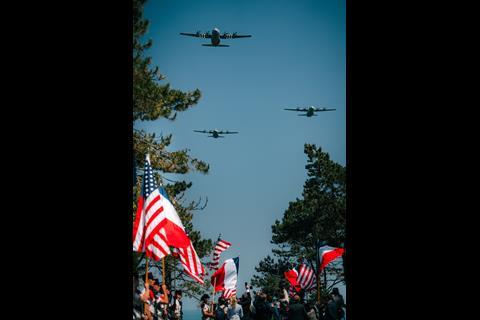Dozens of aircraft from multiple countries were in Normandy, France over the first week of June to mark the 80th anniversary of the D-Day landings in the Second World War. FlightGlobal accompanied the crew of a US Air Force Lockheed Martin C-130J transport, who travelled from their base in Ramstein, Germany to participate in fly-over ceremonies throughout the week.
The sorties included passes as low as 330ft (the minimum allowed by French aviation authorities), high-degree turns and mid-air coordination with other nearby transports, fighters and tankers to pass over historic battlefields including Sainte-Mere-Eglise, Carentan, Utah Beach and Omaha Beach, where heads of state from around the world gathered on 6 June.
See images from the D-Day flight:



